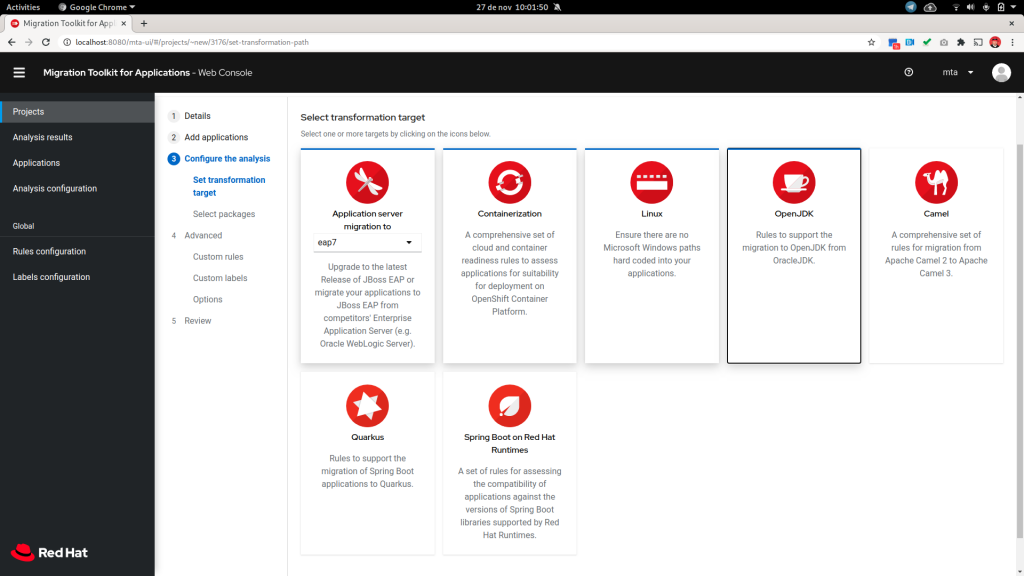Red Hat Eases Migration of Java Applications to Kubernetes
Red Hat has updated the Red Hat Migration Toolkit for Applications to ease Java application migrations. The update includes rulesets that analyze and recommend paths to modernize and migrate Java applications to Quarkus, a framework Red Hat created for running those applications more efficiently on Kubernetes clusters.
James Falkner, product marketing manager for Red Hat Runtimes, says the update is part of the latest release of Red Hat Runtimes, a set of lightweight runtimes that Red Hat makes available via a subscription, that provides access to Quarkus.
Red Hat Migration Toolkit for Applications will make it simpler to convert existing Java applications built using, for example, the Spring Boot framework from VMware, to run on Quarkus. The latest version of Red Hat Runtimes adds a technology preview of an update to Dekorate, an open source tool for generating Kubernetes application manifests, that will now provide hooks to deploy Spring Boot applications on the Red Hat OpenShift application development and deployment platform based on Kubernetes. Red Hat Runtmes now also supports version 2.3.4 of the Spring Boot runtime.
Red Hat also is making available a separate technology preview of an OpenShift Serverless 1.11 release that supports Quarkus and Node.js runtimes. This will make it simpler to incorporate serverless computing frameworks that support open source Knative middleware, like that being advanced by Google and IBM.
Other updates to Red Hat Runtimes include support for JBoss Enterprise Application Platform (EAP) expansion pack 2.0, which adds support for bootable JAR files to applications based on the MicroProfile framework for building Java applications.
Falkner says most MicroProfile application programming interfaces (APIs) already assume there is only one application running per Java Virtual Machine (JVM). EAP makes it possible to host multiple applications and more easily encapsulate them in containers, Falkner says.
Finally, Red Hat is working toward making all subscription runtimes available on IBM Power Systems servers as part of the ongoing effort to better align with parent company IBM. For example, universal base images for Red Hat Runtimes deployments will support Eclipse OpenJ9, rather than OpenJDK, to improve compatibility with IBM Power Systems. There will also be container distributions on Red Hat Enterprise Linux (RHEL) for IBM Power Systems and OpenJ9 for JBoss EAP, Red Hat JBoss Web Server (Tomcat), Red Hat Single Sign-On (SSO) and Data Grid. Kubernetes Operators for JBoss EAP, Single Sign-On and AMQ Broker and Data Grid are forthcoming.
While there’s a lot of enterprise IT interest in being able to build and deploy Java applications on Kubernetes clusters, the Jakarta community, which oversees the development of the follow-on Jakarta platform since it was transferred to the Eclipse Foundation, has yet to standardize on any specific approach. There are, however, initiatives underway that should eventually coalesce into a standard that IT teams can expect Red Hat to support, Falkner says.
In the meantime, however, it’s apparent many enterprise IT organizations are already looking for ways to deploy Java applications on Kubernetes clusters.





